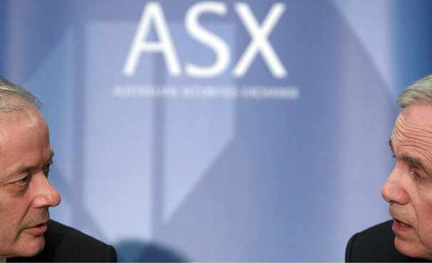

The need for additional scale and regional relevance makes ASX’s participation in consolidation mandatory.
Change is rarely easy, or initially easily accepted. When we consider the events that led to the creation of the Australian Securities Exchange as we know it today, such as the amalgamation of six state exchanges, or the closure of trading floors, or demutualisation, or the merger with the Sydney Futures Exchange, we may forget how challenging to various stakeholders they seemed at the time.
ASX understands the public interest in the proposed combination with Singapore Exchange (SGX) to create the first major regional exchange group in the Asian time zone.
In the near future, ASX will release information that outlines how the proposal advances Australia’s national interest and informs much of the criticism that emerged after the proposal was announced on October 25.
Let me emphatically dispel concerns about a potential reduction — or even transfer to Singapore — of governance and regulatory oversight of ASX’s operations.
The proposal is for a merger of exchange groups, akin to that which has been sanctioned in numerous other jurisdictions, not a takeover of Australian law.
ASIC, not ASX, is Australia’s financial markets regulator and the Reserve Bank oversees Australia’s financial stability standards, enshrined in the Corporations Law.
ASX’s capacity to set the content of its listing and operating rules is already subject to a regulatory approval process in which the Australian government has the final say.
The Australian operations of the merged group will remain under Australian law and regulated by Australian authorities.
This maintenance of existing local sovereignty occurred with New York Stock Exchange’s combination with the Euronext exchange group in 2006 and with Nasdaq’s combination with the OMX group of Nordic exchanges in 2008. There can be no change to ASX rules without the agreement of the Australian Securities and Investments Commission and the Australian government.
ASX views the proposed combination as a natural competitive and regulatory evolution of Australia’s capital markets.
Despite the fact that ASX is already one of the most cost-efficient exchange groups in the world, the need for additional scale and regional relevance makes ASX’s participation in exchange consolidation a mandatory — not an elective — matter for all its stakeholders, and not just its shareholders.
Financial capital is highly mobile and increasingly free of geographic boundaries.
Governments appear to welcome new types of trading participants with high-performance technology-based trading strategies, while multinational corporations are drawn to listing venues of regional and global scale and efficiency. These trends are driving market structure, irrespective of whether or when competition between market operators is introduced in Australia.
At the same time, the global balance of power has been shifting from developed economies to developing ones, especially those in the Asia-Pacific region.
The global crisis accelerated this trend. It is no coincidence that Australian government policy has oriented towards building support for the concept of an Asia-Pacific community, focused on regional economic and security.
The Johnson report concludes: “Greater integration of financial markets is an important aspect of the concept of an Asia-Pacific community, and can contribute to Australia’s broader national economic and security objectives in the region.”
The Johnson report also notes that the contribution to GDP of Australia’s financial sector ranks comparably with its counterparts in other advanced economies, such as the US, Britain Japan and Canada, but it ranks much lower in financial services exports as a share of financial services value added. Additionally, the report quotes Rainmaker statistics showing that half of the 20 largest fund managers are overseas companies, but that only between 3.5 per cent and 11 per cent of the $1.2 trillion funds under management are from offshore.
This compares unfavourably with the situation in Britain (31 per cent of total FUM sourced from abroad), Hong Kong (64 per cent) and Singapore (80 per cent), which broadly defines the challenge facing Australia’s financial services industry to evolve beyond its domestic origins.
The merger presents the opportunity for a larger volume of financial transactions involving offshore parties to flow through Australia — a key characteristic of leading financial centres.
The increased size, liquidity pool and product diversification of a combined exchange group will enable better matching of the risk and reward preferences of investors and companies, reducing the cost of capital for ASX-listed entities. An outcome unequivocally in the national interest.
This is the context in which the ASX-SGX transaction should be judged. As a nation we are indebted to the strength of Asia’s industrialising economies and their appetite for our resources (and government debt) — factors that helped us avoid the worst effects of the global crisis.
Yet, despite talk of becoming more integrated with the pan-Asian economy, a transaction that seeks to achieve this causes parts of the community to raise the spectre of loss of national sovereignty, without understanding the protection afforded by the existing regulatory framework or the competitive forces that threaten to marginalise ASX if parochialism prevails.
Public policy consistency dictates that encouragement of new foreign-owned competitors for domestic exchange-related services, to use their global scale in Australia, also calls for allowing the incumbent exchange group to be similarly allowed to extend its presence through a regional or global combination beyond local shores. Such action, through the proposed ASX-SGX combination, strengthens the national interest and helps to develop Australia’s financial services sector.
Robert Elstone is ASX group managing director and chief executive
Robert Elstone From:The Australian





